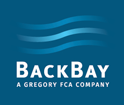In real time, it felt like the longest and most exasperating 12 months on record; looking ahead, the trauma will be transformative for PR and communications professionals.
Nobody likes a downturn. If there’s a silver lining to COVID’s “long pause,” however, it’s that the new backdrop has provided, both, the impetus and the runway for financial services companies to develop new muscle around marketing that will serve their PR and communications efforts long after the pandemic is gone.

To a certain degree, the same was true during the global financial crisis in 2008. Marketers, in the immediate wake of the credit dislocation, sought out more accountability from their ad spending. This sparked a rotation into digital advertisements, and print media ever since has been caught in a slow motion death spiral. (It didn’t hurt that Apple unveiled its first iPhone a year earlier.)
Now, more than a decade later, the COVID-19 pandemic has had an even bigger impact on marketing and communications. In some ways, the effect has been similar to the GFC in that the pandemic has accelerated the adoption of digital capabilities, especially in financial services where adoption was previously limited. Firms that had never considered videos or podcasts, for instance, were overnight being tasked to plan a digital AGM for their investors.
In hindsight, the pandemic allowed marketers to open up their entire toolkit. At BackBay, we were able to demonstrate to clients the value of an integrated strategy. Recall, in March and April, PR efforts for most firms were put entirely on ice. Within that void, though, we helped clients pursue new brand and positioning projects, assisted on crisis communications, crafted client outreach and internal comms, and helped provide transparency and guidance to all other key constituencies. During the depth of the quarantines, communication, in all of its forms, provided comfort everything was okay. And when the market gained some clarity around the scope of the pandemic and its effect on the economy, we helped our clients seamlessly re-insert themselves into the news flow.
The biggest takeaway from the past 10 months, though, has been the value of strategic and trusted insight. And the impact was evident across each of BackBay’s specializations.
In our Fintech group, for instance, one client used the negative cycle to stand out with positive stories from their work to help small businesses access PPP loans. In this case, we knew it was important to quantify the impact, highlighting that in three days, their platform allowed their banking partner to process tens of thousands of applications and ultimately distribute over $1.2 billion of stimulus funding to small businesses.
But it was also the news that wasn’t promoted that was equally effective in preventing PR headaches. And there were no shortages of brands and celebrities that came off as tone deaf in the pandemic’s early days. It underscores the importance of reading the news cycle during crises. Moreover, sometimes, a softer sell can have a bigger impact. In this environment, for instance, we pursued more exclusives than ever before for notable announcements, such as startups that reached unicorn status or new product launches. Beyond offering more control, the approach translated into quality over quantity in the resulting coverage, the desired outcome.
In our Private Equity group, when dealmaking went into early hibernation in March and April, many of our clients used the opportunity to emphasize their role as value-added, hands-on investors. Some, for instance, quickly utilized digital tools to create online events and roundtables to share best practices among portfolio company executives. We helped them recap those events through written communications to emphasize and memorialize the key takeaways. These efforts may not seem support their brand, necessarily, but among their most important constituencies, the ability to help portfolio companies adjust and adapt in real time create the proof points that may ultimately have a bigger impact through references and word-of-mouth advocacy in hard-to-access networks.
In Asset Management and Impact, there was an emphasis on content in 2020. This makes sense, as the market upheaval lent itself to thought leadership and informed perspectives, particularly through a controlled medium. What changed was not only the frequency of production, but also the media utilized (i.e. videos and podcasts) and the distribution channels deployed. Given the wave of thought leadership and “coronavirus takes” we also found that bigger proved to be better. And research and white papers, versus blogs and insights, experienced better engagement and had a longer shelf life, while also supporting further PR outreach and additional content.
Similarly, a number of clients also used the disruption to revisit and redesign their websites. In each case, they wanted to create a cleaner and more modern online presence, while also accommodating stepped-up content strategies through a platform that showcases and amplifies their point of view.
Finally, across BackBay’s global business, we saw a notable uptick in branding and re-positioning projects. In fact, we onboarded several new clients this year who hadn’t previously utilized PR or an outside agency. The conventional wisdom is that marketing is typically the first thing companies look to cut during troubled times; the reality, though, is that it’s during these periods of uncertainty when an outside perspective and experience can have the biggest impact. It’s not always about filling the top of the funnel. This year, in particular, we could see more clearly how these activities support client retention.
Make no mistake, like everyone else, we’re ready to put 2020 behind us. And while we have no interest in reliving the past 10 months, the experience is already re-shaping the go-to-market strategies of our clients, who by and large are anticipating a more normal future soon. We’re seeing this in 2021 plans that incorporate a higher emphasis on digital tactics, planned efforts that are as focused on retention as new-business generation, and a willingness to take calculated risks to try new things that can move the needle.
As exasperating and humbling as 2020 was, the experience has already been transformative and has raised the bar for marketers to reach and resonate with new and existing audiences. It’s in this light, we can look back on the year and appreciate it as an inflection point that advanced both our field and our business.


